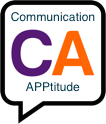 Deena Seifert
Deena SeifertM.S., CCC-SLP[/caption]
Isn't technology amazing? Not only do we have book readers (Kindle, Nook, iPad, etc.), but there are apps out there that will read to you. This technology is known as "text-to-speech." Here's some information about some of the apps on the market. As always, before you press "buy" make sure you have done a little investigation and read the reviews that come with each app.
Read2Go by Bookshare (19.99) - From Bookshare (a free digital library for users with physical or learning disabilities) Read2Go is an app that allows you to download books from the Bookshare library directly to your iPad. It has a text-to-speech feature with a male or female voice which can be set at a desirable rate for the listener.
FireFly by Kurzweil (Free) - for those with Kurzweil computers and accounts, you can download Firefly onto your iPad to read items in your Kurzweil library or the Firely digital library.
Speak it! - $1.99 - This app will highlight words as they are read to you and can save them to an audio file. You can adjust the speed of the voice and hit pause, when needed. What's great about this app is that it can run in the background as you are working.

Web Reader HD $4.99 - a web browser that will read the web to you. You can chose where on the web page you would like it to start reading. It also has male and female voices with speed settings. Files can be synced to your Drop Box account, as well.
SpeakPad - Free (Mobi) - SpeakPad has a female voice with the ability to buy other voices. You can adjust the rate, emails text, saves documents and opens documents. It's free so watch out for ads or the cost of additional voices.
Remember, free apps will likely include advertising of new apps and other information that you might not want to see each time. Sometimes, it's better to spend a few dollars to lessen the aggravation of pop-up ads. The market is constantly changing. Do you have a favorite text-to-speech app? Let us know.

